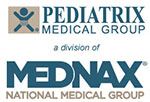Special Interest Group Update
In each issue, one of NANN’s special interest groups shares information in their area of focus.
Research Collaboration: Not Only Between But Also Within

By Amy Koehn, PhD NNP-BC
Research collaboration is not a new concept but it can be a daunting undertaking. The general default is to employ interdisciplinary collaboration, defined as involving “two or more academic, scientific, or artistic disciplines” (Merriam-Webster, n.d.). A classic example is when nurses collaborate with medical staff, therapists, and other providers within the multidisciplinary arena of the neonatal intensive care unit (NICU).
However, intradisciplinary collaboration also provides a strong starting point. Intradisciplinary collaboration occurs “within the scope of a scholarly or academic discipline” (Merriam-Webster, n.d.)).
In simpler terms, intradisciplinary research is a method of nurses serving nurses. The two contemporary nursing doctoral degrees complement each other in interdisciplinary groups. each other in this regard. Neonatal nurses prepared as a doctor of nursing practice (DNP) are educated in the use of evidence-based practice (EBP) and quality improvement (QI). Both approaches converge to yield translation of existing knowledge into clinical practice to optimize healthcare delivery and outcomes. Neonatal nurses also may prepare as a doctor of philosophy (PhD). This training focuses on creating new knowledge to provide answers not yet realized in existing data (Cygan & Reed, 2019; Falkenberg-Olson, 2019). A commentary in the August 2019 Journal of the American Association of Nurse Practitioners called for increased collaboration between DNP and Ph.D. roles to create an influence which will “reduce the knowledge gap through scholarly methods of inquiry and dissemination at the highest level of nursing” (Falkenberg-Olson, 2019, pg. 449). Together the DNP and PhD skill sets create a powerful force to propel neonatal nursing research in all of its forms.
Confusion is common among neonatal professionals regarding what constitutes research. Strictly defined, research is a “careful or diligent search; a studious inquiry or examination … about a particular subject” (Merriam-Webster, n.d.). Therefore, EBP, QI, and original inquiries all constitute forms of research, separate but complementary due to their purpose and goals. Neonatal nursing intradisciplinary collaboration provides the structure to bring intra and interdisciplinary research together to create effective and impactful neonatal research.
The National Association of Neonatal Nurses (NANN) provides an ideal starting point for both novice and experienced researchers to discover potential collaborators. Membership in NANN allows access to special interest groups (SIGs), including one specifically focused on research. Another SIG comprises NNP academic faculty. Academic faculty in universities often engage in a research program as an essential component of their faculty appointment. Nursing faculty are encouraged to stay clinically relevant, so they many seek to pair with practicing clinicians to create and foster meaningful neonatal research. Each SIG is open to all members, and the associated MyNANN community boards offer the chance to network.
Another option is the NANN Mentor Program, where members can search through mentors (for novice researchers) and protégés (for anyone looking to expand their research team).
Collaborations that begin simply have the potential to evolve into more extensive, sponsored research programs through NANN’s Research Summit conference and the Small Grant Program. It can take just one email to open doors that may change your life and the lives of the babies for whom we care.
Research collaboration is the standard now more than ever as the complexity of healthcare and healthcare organizations continues to evolve. Research, whether original or translational, cannot be done in a silo, and interdisciplinary collaboration will still occur. While exploring the many options to research and promote neonatal care, do not neglect to look within. Higher levels of collaboration have been linked to a higher quality of care and improved patient outcomes (Ma et al., 2018). Intradisciplinary collaboration between all levels of nursing will, without a doubt, provide an irresistible force toward improving the care of our vulnerable populations and maximizing outcomes for them and their families.
References
Cygan, H. R., & Reed, M. (2019). DNP and Ph.D. scholarship: Making the case for collaboration. Journal of Professional Nursing, 35(5), 353–357. https://doi.org/10.1016/j.profnurs.2019.03.002
Falkenberg-Olson, A. C. (2019). Research translation and the evolving Ph.D. and DNP practice roles: A collaborative call for nurse practitioners. Journal of the American Association of Nurse Practitioners, 31(8), 447–453. https://doi.org/10.1097/JXX.0000000000000266
Ma, C., Park, S. H., & Shang, J. (2018). Inter- and intra-disciplinary collaboration and patient safety outcomes in U.S. acute care hospital units: A cross-sectional study. International Journal of Nursing Studies, 85, 1–6. https://doi.org/10.1016/j.ijnurstu.2018.05.001
Merriam-Webster. (n.d.). Interdisciplinary. Merriam-Webster.com dictionary. Retrieved July 5, 2021, from https://www.merriam-webster.com.
Our Sponsor


